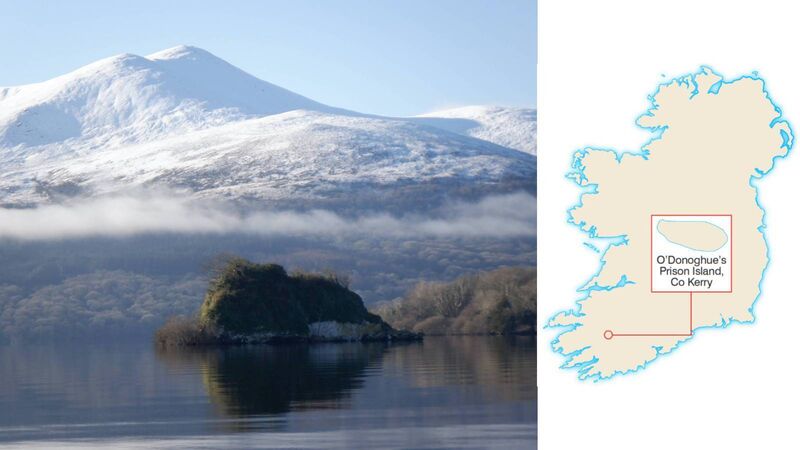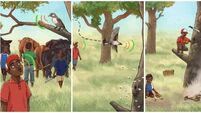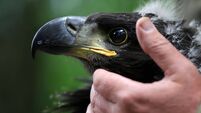Disobedient son's punishment gives O’Donoghue’s Prison Island its name

O'Donoghue's Prison Island, County Kerry: chieftan O'Donoghue used this little island to punish his son for some act of disorder or disobedience
Its formidable cliff walls of limestone forbid any entry to this islet in the Lakes of Killarney. And that fortress-like appearance made it a perfect choice for exactly that purpose.
This is no island at which to linger such as the soul-soothing Innisfallen just a bit further out from Ross Castle. This is a place to imprison your foes.
From the top of Ross Castle, O’Donoghue’s Prison island, wrongly given as 'O’Donohoe’s Prison' on the Ordnance Survey maps, can be seen: A beautiful, if forbidding place. It is about 12m high but seems to rise wrathfully from the lake. If it was on land you could walk around it in 30 seconds.
Its story is steeped in folklore... though like all folklore has elements of truth. Ross Castle was built by the O'Donoghues Mór in the early 15th century. One of the domineering chieftains of the island was wont to imprison his wayward son, Teighe, on the islet. For how long, we do not know, but anything more than a few weeks would have been hard to endure for the prisoner. There is room for a couple of other prisoners there but not enough for a colony. And as prison islands go, it can’t have been that difficult to escape from. It is no Alcatraz or Riker’s Island, say. Then again, if you are chained to the rock it might as well be.
According to the 19th century antiquarian Thomas Crofton Croker, the chieftain O’Donoghue was: “said to have been as renowned for his warlike exploits as for his pacific virtues; and as a proof that his domestic administration was not the less rigorous because it was mild, a rocky island is pointed out to strangers, called O’Donoghue’s Prison,” in which this prince once confined his own son for some act of disorder and disobedience”.
Crofton Croker went on to write that after the chieftain’s death it is believed that at sunrise, on every May-dew morning, the anniversary of his departure, he revisits his ancient lands: “and this distinction is always an omen of good fortune to the beholders: when it is granted to many, it is a sure token of an abundant harvest, — a blessing, the want of which during this prince’s reign was never felt by his people”.
O’Donoghue’s Prison is an impenetrable mass of holly, yew, arbutus, and other densely packed trees. If the stories of the imprisonment of Teighe and others are true then there are possible remains of a cell underneath the vegetation. Yet to be surveyed or excavated.

An evocative sketch of the islet was made in 1841 by a Captain Thomas Hastings. It was drawn from the perspective of Innisfallen with its Romanesque church and depicts two figures gazing at the islet, probably thanking their lucky stars that they were not imprisoned in that solitary place.
A travel writer in 1929 to the Connaught Tribune observed: “We are sure O’Donoghue’s captives had beautiful scenery, which might to some extent relive the tedium of imprisonment and the denial of freedom."
The island amazingly has had one famous visitor. As the British royals idled on the lakes for generations, one of their number in 1858, the Prince of Wales, Edward VII and future king, professed an interest in landing on O’Donoghue’s Island. The Carlow Morning Post related that before the boat trip, the young prince seemed “passionately fond of walking, proceeded on foot for a mile or two, with gun in hand, firing from time to time, at bird, leaf, or fissure in the rocks in the exuberance of those animal spirits which belong to his time of life”. After visiting the prison the prince alighted on the adjacent Mouse Island for good measure.
: Kayak from Ross Castle. While permits are available to kayak on the lake, landing on the islands is discouraged owing to the very sensitive habitats there. Permits are available by calling to the National Parks and Wildlife Services office on the Kenmare Road; gapofdunloetraditionalboattours.com/boat-tours
: , Thomas Crofton Croker; The Carlow Morning Post, 01/05/1858









